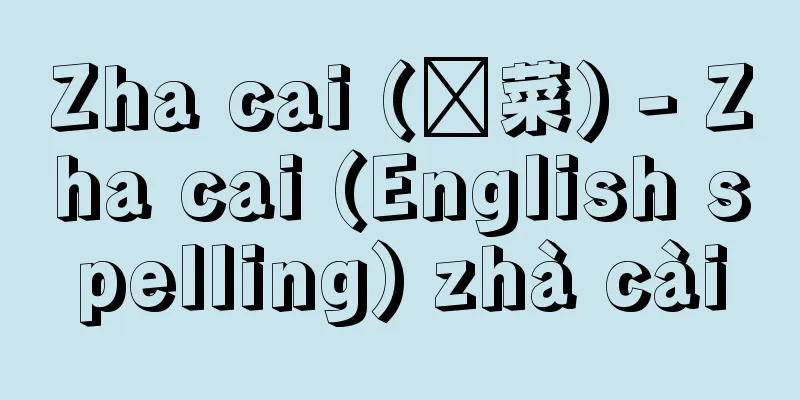Cereal cultivation

|
This refers to an extensive, large-scale agricultural method in which mainly grains are grown. It is a term that is often used in contrast to intensive horticulture. In this method, seeds are scattered on cultivated land and then harvested with little or no intervention. Many grains have the properties to produce a certain yield under certain weather conditions using this method, in contrast to the crops that are the subject of horticulture, which require careful management. Source: Heibonsha World Encyclopedia, 2nd Edition Information |
|
粗放的・大規模に,主として穀物を栽培する農耕方式をいう。集約的に行われる園耕などとの対比で,しばしば使われる用語である。その栽培法は,耕起した耕地に種子をばらまきにした後は,ほとんど手を加えることなく収穫に至るというものである。多くの穀物は特定の気象条件下においては,このような栽培法によっても一定の収穫をあげうる性質をもっており,この点で,園耕の対象となる作物が,周到な管理を必要とすることと対照的である。
出典 株式会社平凡社世界大百科事典 第2版について 情報 |
<<: Japanese linguistics - kokugogaku
Recommend
Toyoha mine
This mine was located in the Jozankei area of M...
Bhutto, Benazir
Born: June 21, 1953, Karachi [Died] December 27, 2...
Tadamitsu Ina
...During the Edo period, this hereditary family ...
Kuma (bear) - bear
A general term for mammals of the Ursidae family i...
Russell, CM
… [Engraving] In the early period, wooden portrai...
Medicine seller - Kusuriuri
Their appearance is depicted in the Muromachi peri...
Cyanamide - Shianamido (English spelling) cyanamide
It is an amide of cyanide, also known as cyanamid...
"The Legend of Zuiou, the Path to Rebirth in the Western Pure Land"
...A collection of biographies that briefly recor...
Giant rock barnacle - Giant rock barnacle
...It is distributed south of the southwestern pa...
Sonokan Shrine Festival - Sonokan Shrine Festival
A festival for the gods of Sono and Han, who were ...
Diplomatic documents
A general term for official documents related to d...
Recho Keiritsu - Recho Keiritsu
A legal code from the Le Dynasty period (1428-1789...
Korean Blacksmith - Karakanuchi
〘Name〙 One of the blacksmiths who served the Great...
Mountain knife - Yamagata
〘 noun 〙 A blade used for mountain work. A hatchet...
Princess Iwanaga
Said to be the daughter of Oyamatsumi-no-Kami, she...


![Yotsukaido [city] - Yotsukaido](/upload/images/67cd1aaf7e384.webp)






